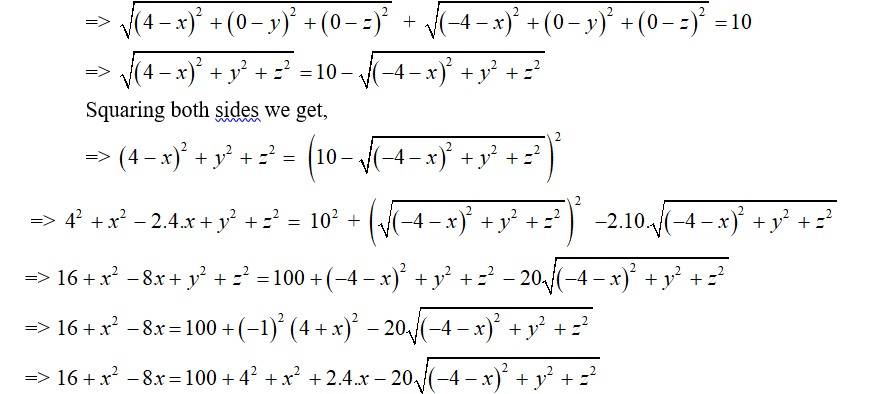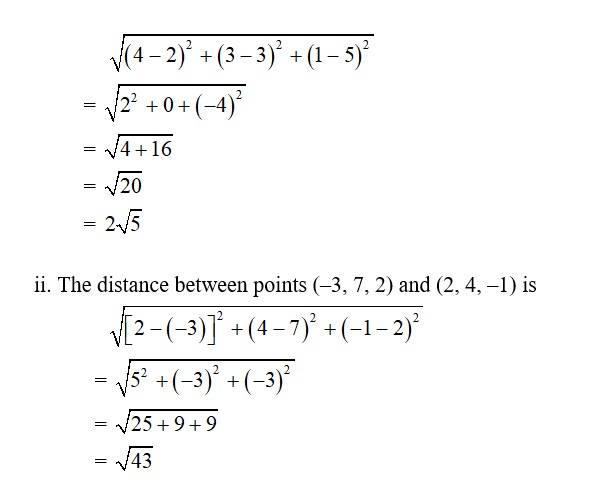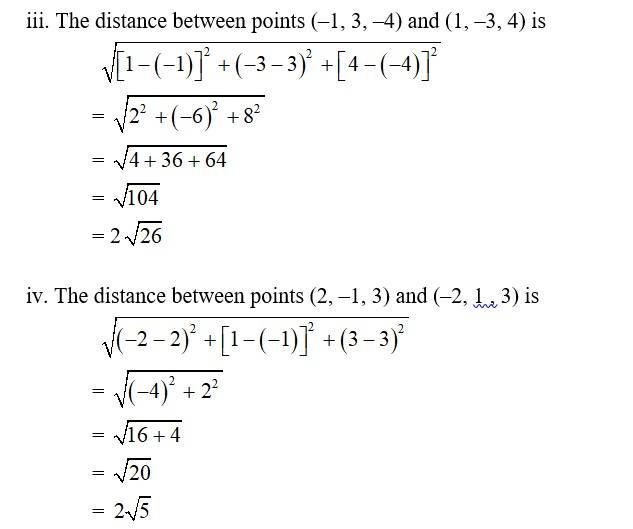Class 11th
Get insights from 8k questions on Class 11th, answered by students, alumni, and experts. You may also ask and answer any question you like about Class 11th
Follow Ask QuestionQuestions
Discussions
Active Users
Followers
New answer posted
6 months agoContributor-Level 10
13. Let P divides AB in ratio k : 1. Then co-ordinates of point P are
=
Let us examine whether the value of k, the point P coincides with point C
Putting
=>
=>
Put in
=
=
=
And put in
=
=
= 2
Therefore, C is a point which divides AB internally in ratio 2 : 1 and is same as P. Hence A, B and C are collinear.
New answer posted
6 months agoContributor-Level 10
12. Let YZ-plane divides the line segment joining A (–2, 4, 7) and B (3, –5, 8) at point P (x, y, z) in the ratio k : 1.
Then the co-ordinates of P are.
As P lies on YZ-plane its x-coordinate is zero.
i.e.
=>
=>
Hence the YZ-plane divides AB internally in ratio.
: 1 = 2 : 3
New answer posted
6 months agoContributor-Level 10
11. Let point Q divides PR in the k : 1. Then co-ordinate of Q will be
=> (5, 4, –6) =
Equating the co-ordinates we get,
= 5
=>
=>
=>
=>
=>
=>
Putting in y-coordinate and z-coordinate
=
= (4 + 2) ÷
= 6 x
= 4
And
= (–5 – 4) ÷
= – 9 x
= – 6
Which is matching with the given co-ordinates of Q.
Hence, the ration in which Q divides PR is k : 1
= : 1
= 1 : 2
New answer posted
6 months agoContributor-Level 10
10. i. Let P(x, y, z) be the point which divides line segment joining (–2, 3, 5) and (1, –4, 6) internally in the ratio 2 : 3
Therefore,
x = = =
y = = =
z = = =
Thus, the required points are
ii. Let P(x, y, z) be the point which divides line segment joining (–2, 3, 5) and (1, –4, 6) externally in the ratio 2 : 3
Therefore,
x = = = –8
y = = = 17
z = = = 3
Thus, the required points are (–8, 17, 3).
New answer posted
6 months agoNew answer posted
6 months agoContributor-Level 10
8. Let P(x, y, z) be the point equidistant from the given points (1, 2, 3) say A and (3, 2, –1) say B.
So, PA = PB
=> =
Squaring both sides,
=> =
=>
=>
=>
=>
=>
=>
Therefore, the required equation of point is
New question posted
6 months agoNew answer posted
6 months agoContributor-Level 10
4. i. The x-axis and y-axis taken together determine a plane known as XY plane.
ii. The coordinates of points in the XY-plane are of the form (x, y, 0).
iii. Coordinate planes divide the space into 8 (eight) octants.
New answer posted
6 months agoContributor-Level 10
3.
| Octants | |||||||
| I | II | III | IV | V | VI | VII | VIII |
coordinates | x | + | – | + | – | + | ||
y | + | – | + | – | – | |||
z | + | – | – | |||||
(1, 2, 3) lies in octant I.
(4, –2, 3) lies in octant IV.
(4, –2, –5) lies in octant VIII.
(4, 2, –5) lies in octant V.
(–4, 2, –5) lies in octant VI.
(–4, 2, 5) lies in octant II.
(–3, –1, 6) lies in octant III.
(–2, –4, –7) lies in octant VII.
Taking an Exam? Selecting a College?
Get authentic answers from experts, students and alumni that you won't find anywhere else
Sign Up on ShikshaOn Shiksha, get access to
- 65k Colleges
- 1.2k Exams
- 679k Reviews
- 1800k Answers





